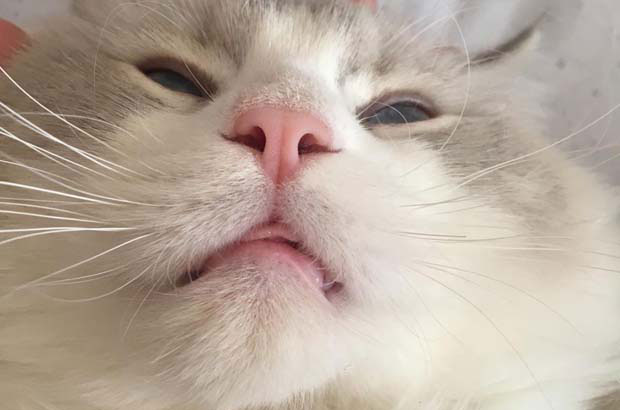Ragdoll Cat: The “Little Fairy” of the Cat World (3)
III. Common Genetic Diseases of Ragdoll Cats
When it comes to the identification of Ragdoll Cats, we have to mention the genetic diseases of Ragdoll Cats. In order to obtain excellent traits in the early stages of the establishment of the breed, many purebred cats have to engage in inbreeding, but this will lead to a serious problem – the incidence of certain genetic diseases is very high. For example, according to a survey of Persian cats worldwide in the early 21st century, the incidence of polycystic kidney disease (PKD) in Persian cats is as high as 38%. This means that on average, four out of every ten Persian cats in the world suffer from polycystic kidney disease, which has reached a very high proportion.
The genetic diseases mentioned here are mainly of three types: recessive genetic diseases, dominant genetic diseases, and semi-dominant genetic diseases. To simply distinguish, recessive genetic diseases refer to genetic diseases that require two copies of the disease-causing gene to develop. Dominant genetic diseases refer to genetic diseases that only require one copy of the disease-causing gene to develop. Semi-dominant genetic diseases refer to genetic diseases that have different severity or incidence rates due to the number of disease-causing genes carried.

There are two main genetic diseases for Ragdoll cats: hypertrophic heart disease (HCM) and polycystic kidney disease (PKD). Both of these genetic diseases are dominant genetic diseases. The following are two genetic diseases of Ragdoll cats:
Hypertrophic heart disease: It is the most common heart disease in domestic cats. Its main pathological manifestation is asymmetric myocardial hypertrophy leading to a reduction in the left ventricular cavity. In layman’s terms, the heart is too large, resulting in insufficient blood supply to the heart and impaired function. Clinically, after the onset of this genetic disease, the cat will be in great pain due to ischemia within a few hours, and will scream in pain and can only move the body with its forelimbs. Many will breathe faster, and even slowly have difficulty breathing and collapse and shock. This genetic disease occurs early in Ragdoll cats, and symptoms can be shown at 15 months.
Polycystic kidney disease: Polycystic kidney disease is the most common kidney disease in domestic cats, especially in Persian cats and related breeds. According to statistics, about 38% of Persian cats suffer from this disease. Ragdoll cats were introduced into the breed with the Persian cat bloodline at the beginning of the establishment of the breed, and therefore also introduced this genetic disease. The kidneys of sick ragdoll cats will grow many cysts, causing a sudden increase in kidney volume and decreased renal function. However, clinical symptoms usually appear only after the cat reaches adulthood. The main symptoms include depression, anorexia, polydipsia, polyuria and weight loss. Sick cats usually die of renal failure at the age of 4-8 years. Any breed with Persian cat bloodline should pay attention to the prevention of polycystic kidney disease.
Unfortunately, there is currently no complete cure for these two fatal genetic diseases of ragdoll cats. We can only maintain the life of ragdoll cats by conducting scientific Sino Valley genetic testing in advance, actively nursing, and taking good care of them.
Leave a Reply